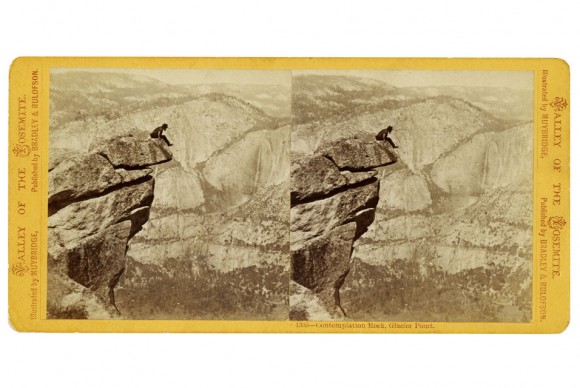Tate Britain Announces Major Eadweard Muybridge Retrospective
LONDON.- The pioneering Anglo-American photographer Eadweard Muybridge (1830-1904) will be the subject of a major retrospective at Tate Britain in autumn 2010. Bringing together over 150 works, this exhibition will demonstrate how Muybridge broke new ground in the emerging art form of photography. From his iconic images of motion to depictions of the sublime landscapes of America, the exhibition will present the full range of Muybridge’s work, exploring how he created and honed remarkable images that continue to resonate powerfully.
Born in Kingston upon Thames in April 1830, Muybridge studied photography before building his career in America. Perhaps best known for his extensive photographic portrayal of animal and human subjects in motion, he was also a highly successful landscape and survey photographer, documentary artist, war correspondent and inventor. Muybridge’s revolutionary techniques produced timeless images that have profoundly influenced generations of photographers, filmmakers and artists, including Francis Bacon, Marcel Duchamp, Jasper Johns, Cy Twombly, and Douglas Gordon.

Eadweard Muybridge, Contemplation Rock, Glacier Point (1385) 1872. Collection of California Historical Society
This broadly chronological exhibition will focus on the period of rapid technological and cultural change from the late 1860s to 1904. It will include the celebrated early experimental series of motion-capture photographs such as The Attitudes of Animals in Motion 1881, and the later sequence Animal Locomotion 1887. It will also consider how Muybridge constructed, manipulated and presented these photographs and will feature his original zoopraxiscope, which projected his images of suspended motion to create the illusion of movement.
Muybridge’s carefully managed studio photographs contrast with his panoramic landscapes of America, in which he balanced professionalism with a truly artistic sensibility. He was fascinated by change and progress and his photographs recorded both the natural beauty of this vast continent, and the rapid colonial modernisation of its towns and cities. The exhibition will include many of his series of images of the Yosemite Valley, along with views of Alaska, Guatemala, urban panoramas of San Francisco, and his 1869 survey of the construction of the Eastward bound Railroad through California, Nevada and Utah. These photographs form a unique social document of this fascinating period of history, as well as representing a profound achievement of technological innovation and artistic originality.
Muybridge travelled between Britain, America and Europe throughout his career, studying photography, and later lecturing around the world. In 1874 while living in San Francisco he shot his wife’s lover and had her son placed in an orphanage, but was subsequently acquitted of the crime as a ‘justifiable homicide’, a story retold in Philip Glass’s opera The Photographer. He returned to England in 1894, and died at home in Kingston in 1904.
Related posts:
- Major Eadweard Muybridge Retrospective Opens at Tate Britain
- Tate Britain Announces Rude Britannia: British Comic Art
- Whitney Announces First Major U.S. Retrospective of the Work of Paul Thek
- SFMOMA Presents Major U.S. Retrospective of Photographer Henri Cartier-Bresson
- Clunie Reid and James Richards at Tate Britain
